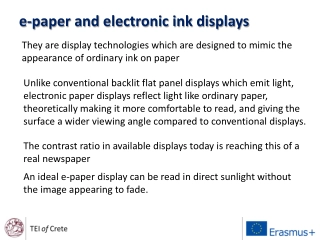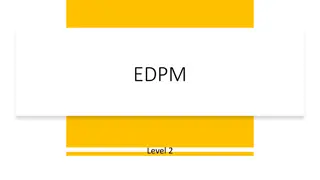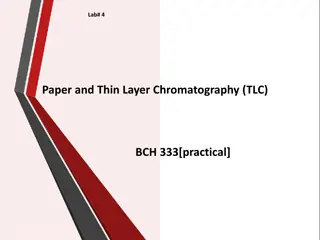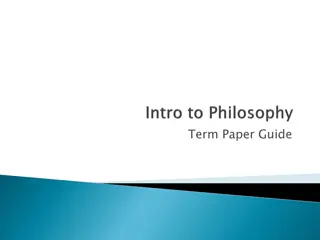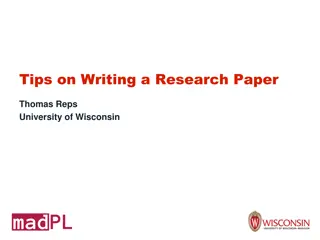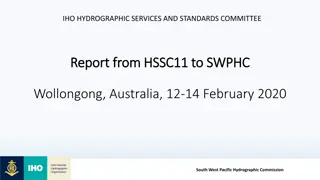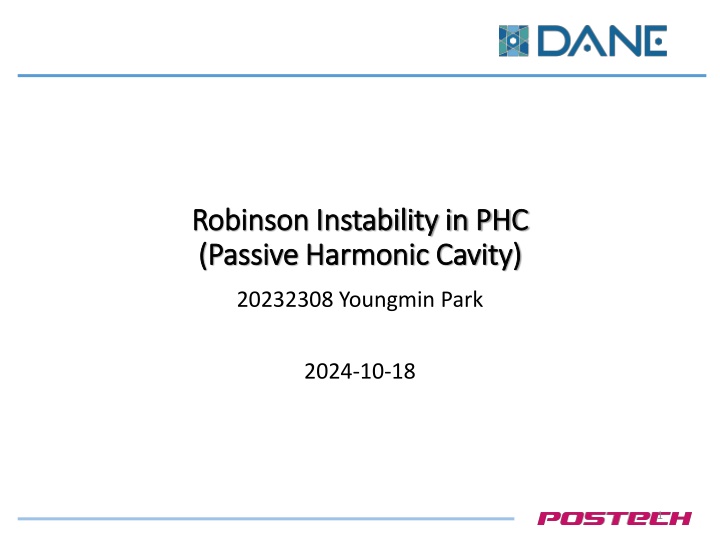
Robinson Instability in Harmonic Cavities
Explore the concept of Robinson instability in passive harmonic cavities, how it relates to beam instability, and the factors influencing its occurrence. Learn about multiple bunch scenarios, threshold shunt impedance, and the implications in storage ring systems. Discover the complexities of beam interactions with cavity impedance and the key parameters affecting beam stability.
Download Presentation

Please find below an Image/Link to download the presentation.
The content on the website is provided AS IS for your information and personal use only. It may not be sold, licensed, or shared on other websites without obtaining consent from the author. If you encounter any issues during the download, it is possible that the publisher has removed the file from their server.
You are allowed to download the files provided on this website for personal or commercial use, subject to the condition that they are used lawfully. All files are the property of their respective owners.
The content on the website is provided AS IS for your information and personal use only. It may not be sold, licensed, or shared on other websites without obtaining consent from the author.
E N D
Presentation Transcript
Robinson Instability in PHC Robinson Instability in PHC (Passive Harmonic Cavity) (Passive Harmonic Cavity) 20232308 Youngmin Park 2024-10-18 1
Index Robinson Instability with Multiple Bunch HHC in Storage Ring PNHC Simulation PSHC Simulation Cavity Mode(D-mode) in PSHC Case 2
Robinson Instability with Multiple Bunch Robinson Instability ? ?2?? ??2+ 2??? 2??=??0?? ?0 (?? ?? + ?? ??) ? ?= ? number of revolution,?? longitudinal displacement,?? synchrotron tune, ? number of charged particle,? slippage factor,? Circumference The beam is influenced by the cavity impedance. Under certain conditions this interaction can lead to beam instability known as Robinson instability. In general, when frequency detuning ? = ?0 ??becomes positive, Robinson instability occurs. Let s assume that ??oscillated with respect to frequency . ?? ? ?? ?0 The frequency shift can be represented by the following equation. ??0? 2??0 ??0 ??0+ ?0 ??0+ ??= ? ??0?0 , ?? 2?? ?= ?? ?? ? ? ? = ?0 1 + ?? ?? 3
Robinson Instability with Multiple Bunch Robinson Instability with Multiple Bunch ?2??? ? ? ? ?? ??,?= ??? ? ? ? ? ?0 The phase difference between each bunch is referred to as "? . The growth rate changes as follows. ???0? 2????0 ?M?0+ ??0+ ?? 1= Im ? ?? = ?? ?M?0+ ??0+ ??Re ?0 2 ? = 4
Robinson Instability with Multiple Bunch Threshold Shunt Impedance 1is greater than the longitudinal damping time(?rad), instability occurs. If ?? In the PLS-II parameters, the threshold shunt impedance for each detune frequency is: Parameter Value Unstable ? 3GeV 1.3 10 3 ? Stable ?rad 8.4 ms 1.37 105108 ???0 ?/?0 89 ?rf 500 MHz 470 5
HHC in Storage Ring Higer orde r 3 4 3 3 4 3 3 Institute Active/Passive NC/SC Q, R/Q HHC MAX-IV ESRF-EBS SIRIUS SLS-II(plan) APS-U(plan) PETRA-IV(plan) SOLEIL-II(study) Passive Active Passive Passive Passive Active Passive Passive Active Active Passive Active Passive NC NC SC SC SC NC SC NC NC NC SC NC NC 21600, 109.25 29735, 86.8 2 108,90 2 108,88.4 2 108,109 23247,99 108,45 27000,88.8 27000,88.8 9200, 165.5 ? ? 37468, 40 BESSY-III(study) Diamond-II(study) SPS-II(study) ALS-U(study) 3 3 3 3 [1] [2] [1] R.P. Walker et al., Diamond-II technical design report , Diamond Light Source Ltd, (2022). [2] Francis Cullinan., Review of Harmonic Cavities in Fourth-Generation Storage Rings ,FLS2023,Luzern,(2023). 6
HHC in Storage Ring PHC The voltage induced by PHC is follows: tan?3 2?3 ? ? ? = 2???avgcos?3cos 3 ?0? + ?? , 3??? The equations for the double RF system are expressed as follows: ? ? = ?1sin ?0? + ?1 2???avgcos?3sin 3 ?0? + ?3+? ?0 2 ? Once the cavity is manufactured, the only adjustable parameters are ? and ??. ? = 6??????cos?3sin?3 ?1cos?1 Introducing ?, the ratio of the harmonic force to the main cavity. ? 0 = ?1 sin?1 ? cos?1 ?0 ?= 0 3tan?3 ? 0 = 3 ?0?1cos?1 1 ? ? 0 = 9 2?02?1 sin?1+ ?3cos?1 tan?3 7
HHC in Storage Ring PNHC The parameter of superconducting and normal conducting cavity considered in the Soleil-II upgrade project. ? ?= 177.7 2 Cav ??= 2.7 104, Set ? Determine ??,?1 Calculate ?1= ? 0 ,?2= ? 0 ,?3= ? 0 2 2??0??? ??1 ?1 0 ? ?? ? ?0 ?2exp ??? 2 0 2???0??? ? 2???0??? 3 ??2= 1/2 2 24??0??? ??3 4 ?? ? ?0 exp ?1= 0 ??? 2 0 4 5 4 ? = 181.88 kHz,??= 19 ps ? = 100.20 kHz,??= 28 ps ? = 66.07 kHz,??= 64 ps 8
HHC in Storage Ring PNHC and Threshold Shunt Impedance ???0? 2????0 ?M?0+ ??0+ ?? 1= ?? ?M?0+ ??0+ ??Re ?0 2 ? = In general, when using a normal conducting cavity, there is almost no region in the PLS-II parameters where instability does not occur. Unstable In the case of a stable region, the bunch length when ? 0.4 is too small, and is not useful. ? = 0.44 ? = 1 Stable For 1 cavity, there were no conditions that satisfied bunch lengthening. Stable, but not useful Instability region To address this issue, a cavity with a high ? must be used, such as a superconducting or cryogenic copper cavity. ??= 2.7 104 ??= 2.4 M , 9
HHC in Storage Ring PNHC Simulation 2 Cav, ? = 66.07 kHz 3 Cav, ? = 275.81 kHz 4 Cav, ? = 335.3 kHz 10
HHC in Storage Ring Analysis 3 Cav, ? = 275.81 kHz Mode 0 Fitting: 25.7 s 1 Analytic: 1 1 ????= 32.0 s 1 ?0 0 0 Mode 1 Fitting: 136.4 s 1 Analytic: ?0 1 1 ????= 119 ? 1 1 1 4 Cav, ? = 335.3 kHz Mode 0 Fitting: 12 s 1 Analytic: 1 1 ????= 7 s 1 0 ?0 1 Mode 1 Fitting: 28 s 1 Analytic: 0 1 1 ????= 20? 1 ?1 1 11
HHC in Storage Ring PSHC The parameter of superconducting and normal conducting cavity considered in the Soleil-II upgrade project. ? ?= 45 1 Cav ??= 108, ?1and ?2maintains a constant value because tan?3 . ?0 ??1 +? cos?1 3tan?3 ?0 ??1 ?2= 9 2?02?1 sin?1+ ?3cos?1 2?1sin?1 ?1= sin 1 sin 1 9 2?0 , tan?3 Set ? Determine ??,?1 Calculate ?1= ? 0 ,?3= ? 0 ? = 46.81 kHz,??= 19 ps ? = 26.75 kHz,??= 28 ps ? = 11.70 kHz,??= 64 ps 12
HHC in Storage Ring PSHC By using PSHC (Passive Superconducting Harmonic Cavity), it is possible to achieve conditions for bunch lengthening without causing typical coupled bunch instability. Unstable However, considerations must be made regarding D-mode instability, and there is a drawback in that it is not possible to reduce ?2to 0. Stable Stable ??= 108 ??= 4.5 G , 13
HHC Simulation and Result PSHC Case 1 Cav, ? = 42 kHz ??? Mode 0 Fitting: 141.24 s 1 Analytic: ?0 1 1 ????= 117.05 s 1 0 ??? Mode 1 Fitting: 134.93 s 1 Analytic: ?0 1 0 1 1 ????= 118.27 s 1 1 ??? Fitting: 7.97 s 1 14
Cavity Mode(D-mode) in PSHC Case D-mode Instability This new mode was not identified earlier due to the assumption that ??. This instability occurs when 2???. ? = +? ??0? 2??0 ??0 ??0+ ?0 ??0+ ??+ ? ??0?0 = 0 2?? ?? ?= log10abs ? ? 2 ? 2 ? ?, 1/3 2?? ? ? r= ?? ? ?2 4? 1 ?0? ?0 ??? ?? , ?= ??? = 2 2? 3?0??? 3?? 2?0 8?? 2?0 ? ? ? ? ?? ??2 ? ? ??,? =1 ? ?? 4?? ? = ?? 3?0 ? ? ? ? 2 ? = 2,? = 8?2? 2 4??
Cavity Mode(D-mode) in PSHC Case Calculation: ?= 41.01 kHz, ??= ??.? ? ?, ????= ??.? ??? Simulation: ?= 40.98 kHz, ??= ??.?? ?, ????= ?? ??? Problem There is a discrepancy between the calculations and simulations. 1 Cav, ? = 42 kHz 2 Cav, ? = 57 kHz 3 Cav, ? = 80 kHz rC/S ?C/S ?thC/S 43.2 7.98 s 1 1Cav, ? = 42 kHz 41.01 40.98 kHz 19.8 40 kHz 43.2 19 s 1 2Cav, ? = 42 kHz 55.98 55.96 kHz 25 57 kHz 45.7 7 s 1 3Cav, ? = 42 kHz 79.25 79.20 kHz 28 80 kHz
Appendix A. Simulation Method ??+1= ?? 1 2?0 + ? ??+ ?? ?0 2?? ?0 ?? ??0 ? ?? ??+1= ??+ ?? ?0 ?0 ??+1 ?:Energy difference, ?:position difference,??:damping time,?0:revolution period,?0:radiation loss, ?? ?:norminal RMS energy spread,R:random number avg 0,RMS 1 ,?:slippage factor ??,?= ??,? 1 exp ????? ? ???? ? ?? ?????? ?, ??,?= Re ??,? ??= ?1 sin ?????+ ?1 , 2?? The voltage from the main cavity is assumed to be a sin wave. The voltage induced by passive harmonic cavity is determined by the wake field. 0 ???? 2 if ? < 0 ?? ?? if ? = 0 ?0 ? = ?? ??????? ???? 2???cos ????? if ? > 0 17


